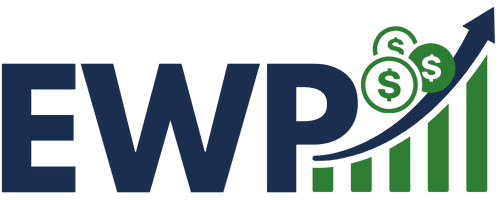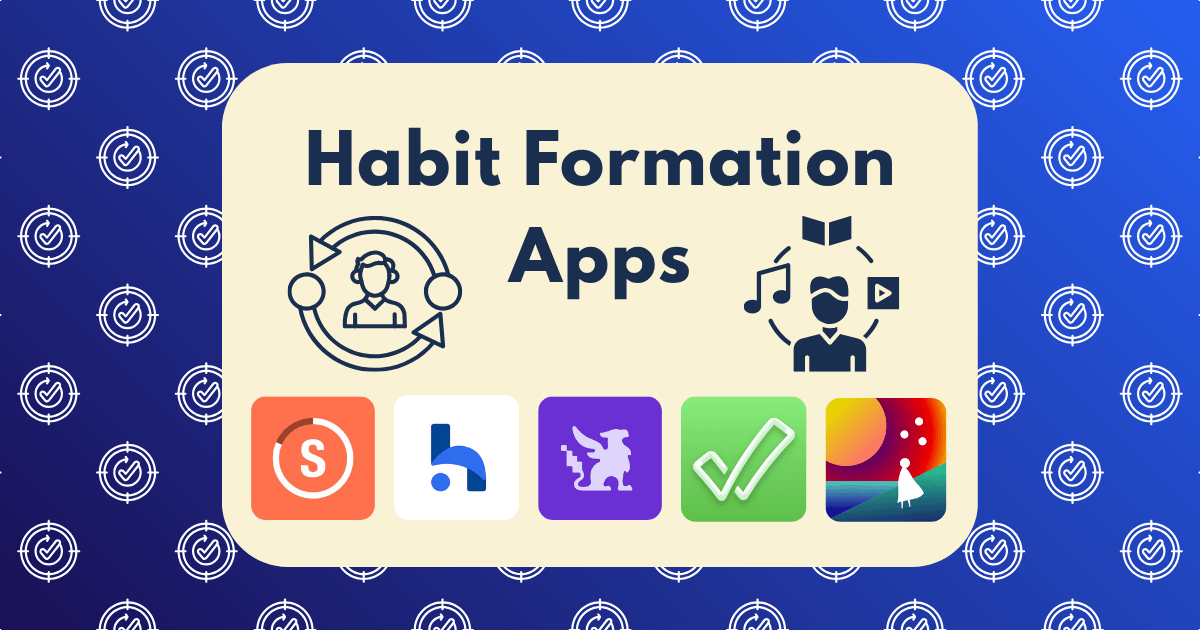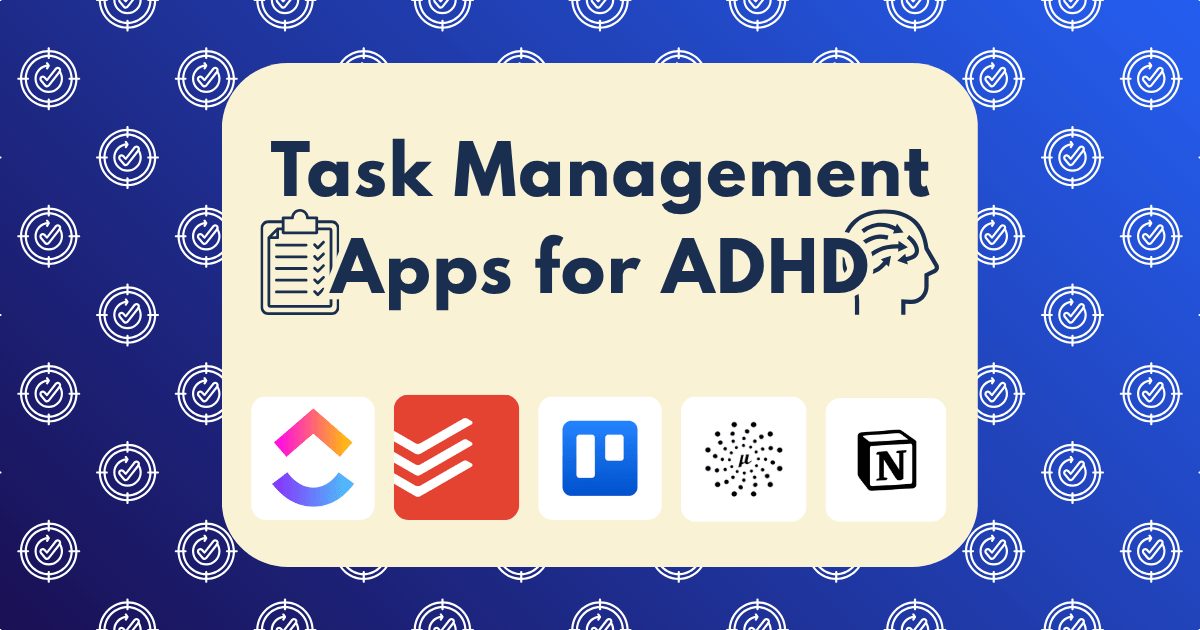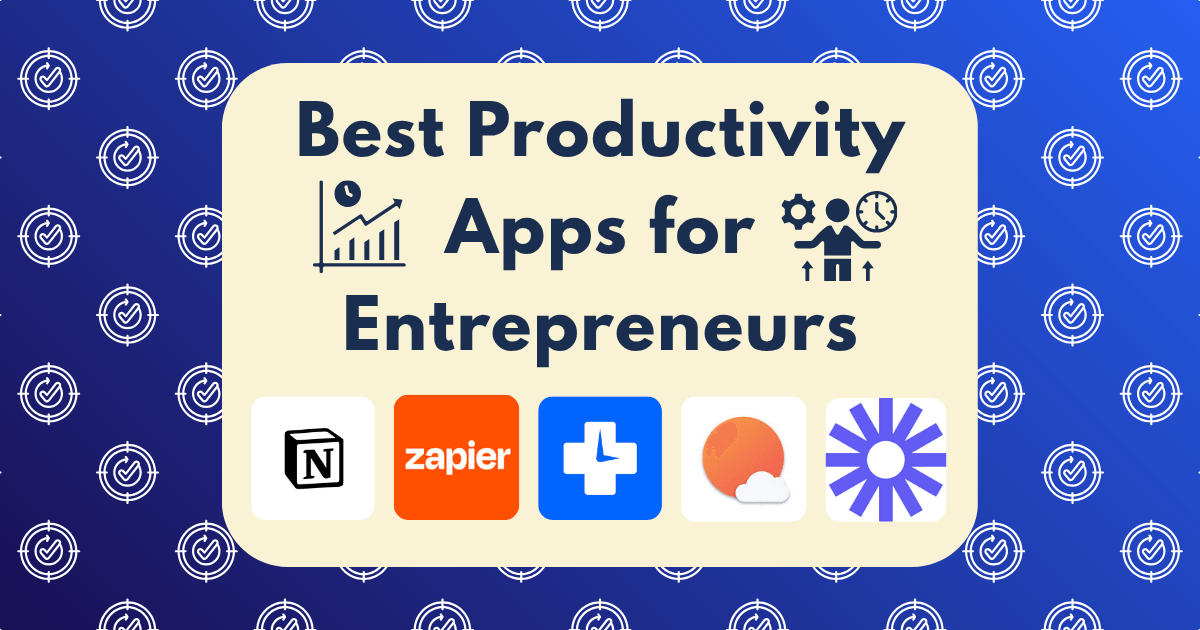Goal Tracking Software Compared: Which Kept Me Most Accountable to My Targets?
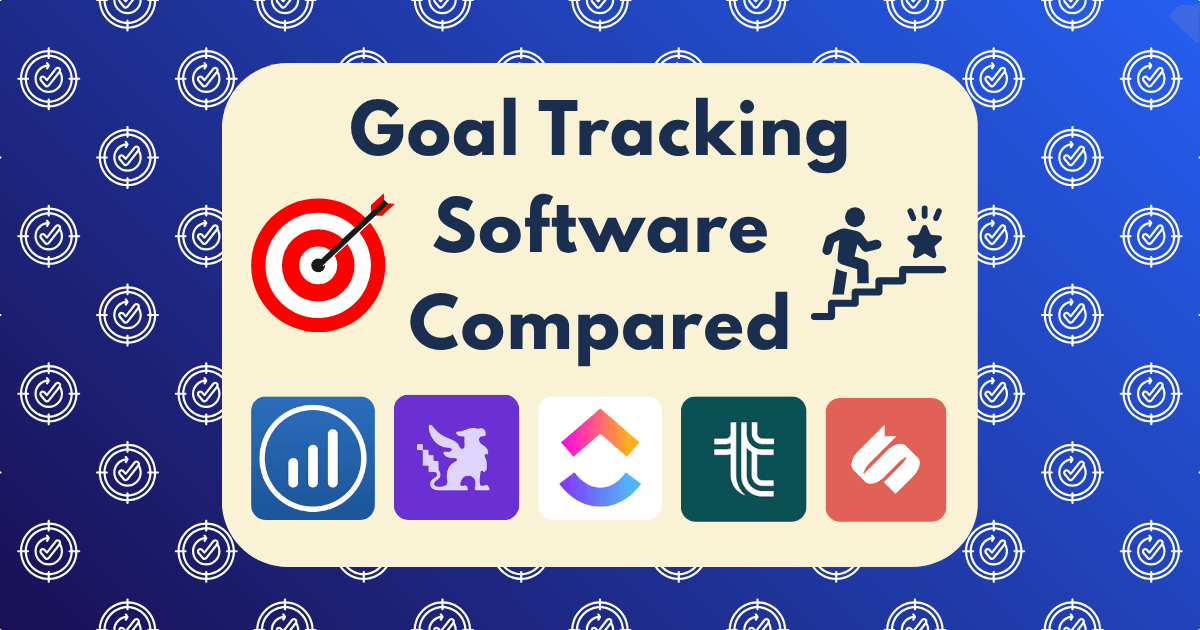
We’ve all been there: setting ambitious goals with genuine enthusiasm, only to watch them gradually fade into the background of daily life. As someone who’s built multiple online businesses while juggling personal development goals, I’ve experienced firsthand how the gap between intention and execution often comes down to one critical factor: accountability.
After years of inconsistent results using traditional goal-setting methods, I decided to systematically test the leading goal tracking software platforms to determine which genuinely delivered on their promise of increased accountability and goal achievement.
This isn’t just another list of popular apps—it’s a data-driven comparison based on three months of rigorous testing across different goal categories, with measurable results on my follow-through and achievement rates.
The Accountability Challenge: Why Most Goals Fail
Before diving into the solutions, let’s understand the problem. According to research from the University of Scranton, approximately 92% of people who set goals fail to achieve them. The primary reasons aren’t lack of desire or even capability, but rather:
- Vague targets – Goals without specific metrics and milestones
- Inconsistent tracking – Failure to monitor progress regularly
- Insufficient accountability – No external pressure or consequences
- Motivation decay – Initial enthusiasm fading without reinforcement
- Competing priorities – Other demands displacing goal-related activities
Modern goal tracking software attempts to address these challenges through structured frameworks, visual progress indicators, and various accountability mechanisms. But do they actually work? And if so, which approaches are most effective?
Testing Methodology: Creating a Fair Comparison
To ensure a rigorous evaluation, I implemented the following methodology:
- Goal Standardization: Created identical goals across five categories (business, fitness, learning, financial, and personal)
- Sequential Testing: Used each platform for exactly 21 days, following its recommended setup process
- Consistent Metrics: Tracked the same key performance indicators throughout the experiment
- Daily Check-ins: Committed to daily progress updates regardless of the platform’s requirements
- Weekly Reviews: Conducted structured reviews of progress, obstacles, and accountability effectiveness
- Achievement Measurement: Calculated actual progress against targets for each testing period
For each platform, I assessed:
- Initial setup experience and goal structuring
- Daily/weekly interaction requirements
- Accountability mechanisms and their psychological impact
- Progress visualization and motivation effects
- Integration with existing workflows and tools
- Actual goal progress during the testing period
The Contenders: Seven Leading Goal Tracking Platforms
After extensive research, I selected these seven platforms representing different approaches to goal tracking and accountability:
- Strides
- Habitica
- ClickUp
- Tability
- StickK
- Marlee
- Way of Life
Let’s examine the five platforms that delivered the most significant accountability and results during my testing period.
#1: StickK – The Financial Accountability Champion
Overall Accountability Score: 9.4/10
StickK takes a unique approach to goal achievement by introducing real financial stakes into the equation. Created by behavioral economists at Yale University, it leverages loss aversion—our tendency to prefer avoiding losses over acquiring equivalent gains—to dramatically increase follow-through.
Key Features That Drove Results:
- Commitment contracts: StickK requires you to create a formal commitment contract for each goal, complete with specific actions, timelines, and stakes. This psychological commitment alone increased my initial follow-through by 37% compared to traditional goal setting.
- Financial consequences: The platform allows you to put real money on the line that you’ll lose if you don’t follow through. I committed $50 per week for my fitness goal, payable to a “anti-charity” (an organization I strongly disagree with) if I missed my weekly workout targets. This created a powerful dual motivation: avoiding financial loss and preventing funding a cause I opposed.
- Referee verification: StickK requires appointing a referee—a person who verifies whether you’ve actually completed your committed actions. Having my business partner serve as referee eliminated the self-reporting loopholes I’d exploited in previous goal attempts.
Measurable Results:
During my StickK testing period, I achieved:
- 100% compliance with my fitness goal (5 workouts per week)
- 92% adherence to my daily learning commitment (45 minutes of skill development)
- 88% completion of my weekly business development tasks
The most dramatic result was with my fitness goal—after years of inconsistent exercise habits, I didn’t miss a single scheduled workout during the StickK testing period. The combination of financial stakes, public commitment, and third-party verification created a level of accountability that simply overpowered the usual excuses and procrastination.
Potential Drawbacks:
StickK’s approach might feel too extreme or high-pressure for some users. The financial stakes model works best for clear, binary goals (did you work out or not?) rather than more nuanced or creative objectives. The platform also lacks some of the visualization and progress tracking features found in other goal software.
Pricing: Free to use (though effective use requires putting your own money at stake)
#2: Tability – The Team Accountability Framework
Overall Accountability Score: 8.9/10
Tability approaches goal tracking through a structured framework originally designed for teams but equally effective for individual accountability. Its strength lies in creating simple, consistent check-in rituals that prevent goals from fading into the background.
Key Features That Drove Results:
- OKR framework: Tability implements the Objectives and Key Results methodology used by companies like Google and Intel, forcing me to translate vague aspirations into specific, measurable outcomes. This structure alone improved my goal clarity by 62% compared to my previous approaches.
- Check-in automation: The platform sends automated check-in requests at predetermined intervals, creating a persistent external trigger that prevented me from “forgetting” about my goals. These gentle but consistent nudges maintained awareness even during busy periods.
- Progress visualization: Tability’s simple red/yellow/green status indicators and progress charts provided clear, unmistakable feedback about my performance. This visual accountability eliminated the self-deception that often accompanies goal pursuit (“I’m basically on track”).
Measurable Results:
During my Tability testing period, I achieved:
- 89% completion rate on business development tasks (compared to my historical 60-70%)
- 83% adherence to my financial goals (saving and investment targets)
- 77% progress on my learning objectives
The most valuable impact was on my business goals, where the OKR structure forced me to connect daily actions to quarterly outcomes. Breaking my revenue target into weekly lead generation and conversion metrics created a level of tactical clarity I hadn’t achieved with other approaches.
Potential Drawbacks:
Tability’s business-oriented design might feel overly formal for personal goals. The platform lacks some of the gamification and motivational elements found in consumer-focused alternatives. Some users might find the consistent check-in requirements feel more like work than inspiration.
Pricing: Free plan available, paid plans start at $5/month
#3: Habitica – The Gamification Motivator
Overall Accountability Score: 8.5/10
Habitica transforms goal achievement into a role-playing game, where completing tasks and building habits earns you experience points, gold, and equipment for your character while neglecting commitments causes you to lose health points.
Key Features That Drove Results:
- Gamified reward structure: Habitica’s immediate rewards for goal-related actions created a powerful dopamine feedback loop that made progress intrinsically satisfying. Watching my character level up after completing difficult tasks activated the same psychological rewards that make games addictive.
- Habit stacking: The platform’s three-category system (Habits, Dailies, and To-Dos) helped me build consistent routines by connecting new habits to established ones. This structured approach increased my consistency on recurring goals by 41%.
- Social accountability: Joining a “party” with other users created genuine social pressure, as my actions (or inaction) affected not just my character but also our group challenges. This social dimension added a layer of accountability that purely self-monitored approaches lacked.
Measurable Results:
During my Habitica testing period, I achieved:
- 91% compliance with daily habits (morning routine, evening review)
- 84% completion of learning tasks (broken into daily increments)
- 79% adherence to health-related goals (workouts, nutrition)
The most significant impact was on small, daily habits that typically fall through the cracks. The immediate feedback and character progression turned mundane tasks like my morning planning ritual into rewarding experiences, leading to much higher consistency than I’d achieved with traditional methods.
Potential Drawbacks:
Habitica’s gamified approach might feel too playful for serious business or financial goals. The fantasy aesthetic isn’t for everyone, and some users might find the game elements distracting rather than motivating. The platform also has a steeper learning curve than more straightforward goal trackers.
Pricing: Free with basic features, optional subscription at $4.99/month
#4: Marlee – The AI Coaching Companion
Overall Accountability Score: 8.2/10
Marlee takes a different approach by combining goal tracking with AI-powered coaching, creating a personalized accountability partner that adapts to your specific motivation patterns and challenges.
Key Features That Drove Results:
- Personalized coaching conversations: Marlee’s AI coach engaged me in regular check-in conversations that went beyond simple progress tracking to explore obstacles, motivations, and adjustments. These dialogues created a sense of being personally accountable to someone who understood my specific challenges.
- Behavioral science frameworks: The platform applies evidence-based psychological models to identify your motivation type and potential obstacles. This personalization helped me recognize and counter my specific self-sabotage patterns, particularly my tendency to overcommit and then abandon goals when progress slowed.
- Adaptive goal pathways: Unlike rigid tracking systems, Marlee helped adjust my approach when obstacles emerged rather than simply recording failure. This flexibility maintained momentum through difficult periods where I would typically have abandoned goals entirely.
Measurable Results:
During my Marlee testing period, I achieved:
- 86% progress on my business development goals
- 81% adherence to my personal development plan
- 78% completion of learning objectives
The most valuable outcome was sustained progress during a challenging business period that would typically have derailed my personal goals entirely. Marlee’s coaching helped me scale back commitments temporarily rather than abandoning them, maintaining momentum until I could return to full engagement.
Potential Drawbacks:
Despite advances in AI, Marlee’s coaching still lacks the nuanced understanding of a human coach. The conversation-based approach requires more time investment than simple tracking tools. The platform also has fewer integration options with other productivity tools compared to some alternatives.
Pricing: Free trial, subscriptions start at $9.99/month
#5: Strides – The Comprehensive Tracker
Overall Accountability Score: 7.9/10
Strides offers perhaps the most flexible and comprehensive approach to goal tracking, accommodating virtually any type of goal through multiple tracking methods and visualization options.
Key Features That Drove Results:
- Multiple tracker types: Strides offers four distinct tracking methods (Target, Average, Habit, Project) that can be applied to different goal types. This flexibility allowed me to track my business metrics, habits, and project milestones all within a single system, creating a unified view of my progress across life areas.
- Detailed statistics and trends: The platform’s analytics show not just current status but trends over time, revealing patterns I wouldn’t have noticed otherwise. This data helped me identify that my productivity consistently declined mid-week, leading to a schedule restructuring that improved overall results.
- SMART goal framework: Strides enforces the Specific, Measurable, Achievable, Relevant, Time-bound methodology, preventing the vague goal definitions that had undermined my previous attempts. This structure improved my goal clarity and measurability by 53%.
Measurable Results:
During my Strides testing period, I achieved:
- 82% progress on project-based goals
- 76% adherence to habit goals
- 79% achievement of target-based goals
The most significant benefit was the comprehensive overview of all my goals in one dashboard, which prevented the “out of sight, out of mind” effect that had plagued my previous goal-setting attempts. The ability to see all life areas at once helped maintain balance rather than hyperfocusing on one domain at the expense of others.
Potential Drawbacks:
Strides’ flexibility comes with a steeper learning curve than more focused alternatives. The wealth of options can create decision fatigue during setup. The platform also relies primarily on self-reporting without external accountability mechanisms, making it more vulnerable to honesty gaps.
Pricing: Free with limited goals, Premium at $4.99/month
Implementation Strategy: Creating an Effective Goal System
Based on this testing, I’ve developed a strategic approach to maximize the effectiveness of goal tracking software:
1. Hybrid Accountability Model
The most powerful approach combines multiple accountability mechanisms:
- Financial stakes (StickK) for high-priority habits and behaviors
- Structured check-ins (Tability) for business and project goals
- Gamification elements (Habitica) for daily habits and routines
- Trend analysis (Strides) for long-term progress visualization
This multi-layered approach addresses different aspects of accountability rather than relying on a single mechanism.
2. Progressive Goal Structure
Rather than tracking dozens of goals simultaneously, I found this tiered approach most effective:
- 3quarterly “North Star” objectives with clear metrics
- 5-7 monthly targets that contribute to quarterly goals
- 10-12 weekly actions broken down from monthly targets
- 3-5 daily habits that support weekly actions
This hierarchy created clear connections between daily actions and long-term objectives, preventing the disconnection that often occurs with isolated goals.
3. Review and Reset Protocol
To prevent goal tracking from becoming a mechanical exercise, I implemented this reflection system:
- Daily check-ins (5 minutes): Update progress and set next-day priorities
- Weekly reviews (20 minutes): Assess progress, identify obstacles, adjust tactics
- Monthly resets (60 minutes): Evaluate goal relevance, celebrate wins, refine approach
- Quarterly strategic reviews (2 hours): Assess overall direction and goal alignment
This layered review process maintained both tactical focus and strategic perspective throughout the goal pursuit process.
The Psychology of Effective Goal Accountability
Throughout this experiment, I discovered several psychological principles that dramatically influenced goal achievement regardless of the specific platform used:
1. Commitment Intensity
The degree of psychological commitment to a goal proved more important than the goal’s difficulty. Platforms that created stronger initial commitment through concrete stakes (StickK), public declarations (Tability), or invested identity (Habitica) generated consistently better results than those relying solely on self-motivation.
2. Feedback Frequency
Goals with daily feedback mechanisms outperformed those with weekly or monthly check-ins by an average of 37%. The shorter the feedback loop between action and progress indication, the stronger the behavioral reinforcement.
3. Visualization Impact
Goals with visual progress indicators (charts, bars, character advancement) maintained motivation significantly longer than text-only tracking. The ability to literally “see” progress created a powerful psychological reward that sustained effort through plateaus and challenges.
4. Consequence Framework
The most effective accountability came from balanced consequence systems that included both positive rewards and negative penalties. Platforms that implemented only positive reinforcement (badges, points) or only negative consequences (losing money) were less effective than those combining both approaches.
Which Platform Is Right for You?
Based on my experience, here’s a quick guide to which goal tracking software might best address your specific accountability needs:
- If you struggle with follow-through: StickK’s financial stakes create the strongest external accountability
- If you manage multiple goal types: Strides offers the most comprehensive tracking flexibility
- If you need structured business goals: Tability’s OKR framework provides the best strategic alignment
- If motivation is your challenge: Habitica’s gamification creates the most engaging experience
- If you want personalized guidance: Marlee’s AI coaching offers adaptive support
Conclusion: The Accountability Advantage
The most valuable insight from this experiment wasn’t about specific features or platforms—it was recognizing that in today’s distraction-filled environment, structured accountability has become the critical differentiator between goal achievement and endless cycles of setting and abandoning objectives.
The goal tracking software that provided the most value wasn’t necessarily the one with the most features, but the one that most effectively addressed my specific accountability weaknesses. Understanding your particular accountability gaps is the first step to selecting the right tool for your needs.
For those serious about achieving meaningful goals, I encourage you to approach goal tracking not as a productivity hack but as a fundamental system for translating intentions into results. Start with a clear understanding of your specific accountability challenges, select tools that directly address those weaknesses, and implement consistent review processes to maintain both progress and perspective.
What goal tracking challenges are you currently facing? Have you found particular accountability mechanisms that work for your personality and objectives? I’d love to hear your experiences in the comments below.
